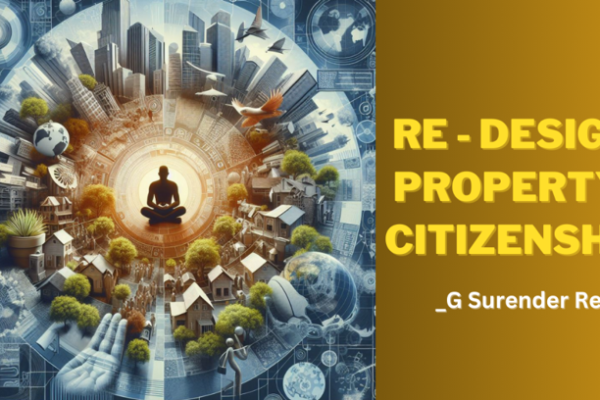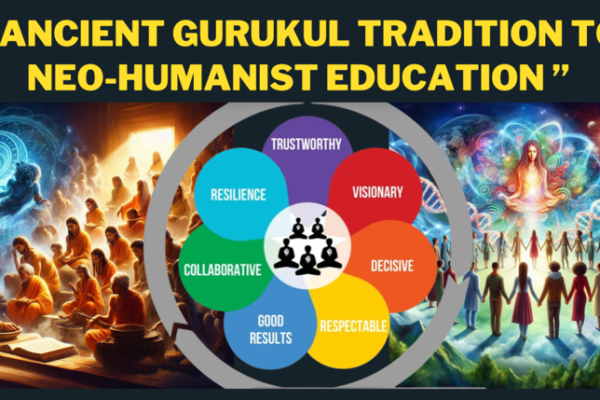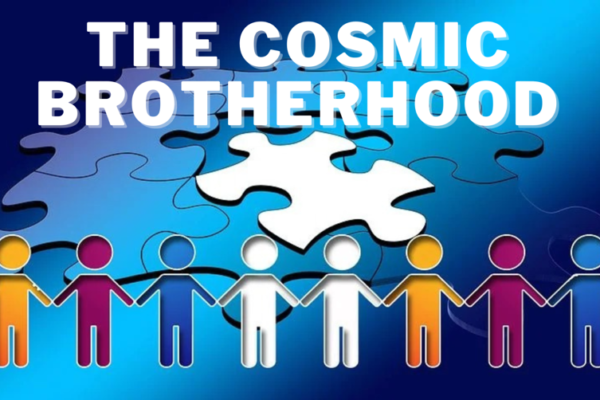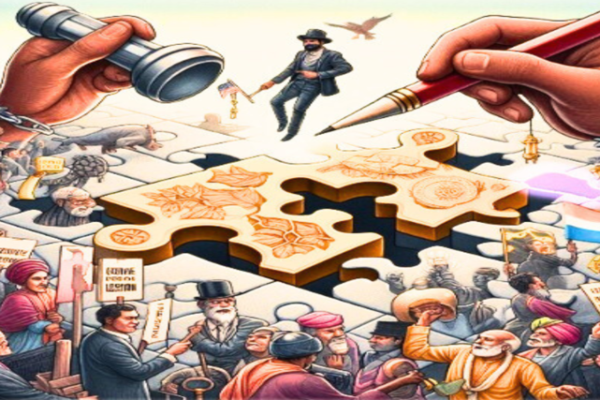– Rajendra

In today’s complex and interconnected world, the concept of moral leadership has become increasingly crucial.
Here’s a framework outlining the characteristics of a moral leader and how individuals can embody these qualities in their own organizations and spaces:
Characteristics of a Moral Leader:
- Integrity: A moral leader acts with honesty, transparency, and consistency in their actions and decisions. They uphold ethical principles even in the face of challenges or temptation.
“It cannot be said that the ultimate aim of human life is not to commit theft; what is desirable is that the tendency to commit theft should be eliminated. Not to indulge in falsehood is not the aim of life; what is important is that the tendency of telling lies should be dispelled from one’s mind. “ ( Aguide to Human conduct)
- Empathy: They demonstrate empathy and compassion towards others, understanding their perspectives and feelings. They prioritize the well-being and dignity of all individuals. Their slogan is, ”Love for all, Hatred for None”.
- Visionary Leadership: A moral leader inspires others with a compelling vision for a better future. They articulate a clear purpose and direction, motivating others to work towards common goals. True Leaders Create Leaders, not just followers.
- Courage: Moral leaders have the courage to stand up for what is right, even in difficult or controversial situations. They challenge injustices and advocate for positive change.
- Accountability: They take responsibility for their actions and decisions, acknowledging mistakes and learning from failures. They hold themselves and others accountable to high ethical standards.
- Humility: Moral leaders remain humble and open to feedback and constructive criticism. They recognize that leadership is a collaborative endeavor and value the contributions of others.
- Fairness and Justice: They treat all individuals with fairness and equity, regardless of their background or status. They strive to create inclusive environments where diversity is respected and valued.
- Coordinated Cooperation Leadership : Moral leaders prioritize the needs of others and serve as stewards of their organizations or communities. They empower others to grow and succeed, rather than seeking personal gain or recognition. true leaders work in teams with coordinated cooperation rather than fostering a culture of subordination.
- Ethical Decision-Making: They make decisions guided by moral principles and ethical frameworks, considering the impact on stakeholders, society and environment as a whole.
- Continuous Learning and Growth: Moral leaders are committed to personal and professional development, continuously seeking to improve themselves and their leadership skills for the greater good of humanity.
By embodying these characteristics and taking action to become moral leaders in their own organizations and spaces, individuals can contribute to creating a more ethical, compassionate, and just world for all.

What is Sadvipra :
“Sadvipra” is a term used in the Progressive Utilization Theory (Prout), a socio-economic and political philosophy developed by Prabhat Ranjan Sarkar. In Prout philosophy, a sadvipra is an individual who has attained a high level of moral and spiritual development and who dedicates their life to serving humanity and promoting social welfare. Becoming a sadvipra involves a commitment to personal growth, ethical conduct, and selfless service to others. Here are some steps one can take to strive towards becoming a sadvipra:
- Self-Reflection and Inner Growth: Begin by reflecting on your own values, beliefs, and behaviors. Engage in practices such as meditation, introspection, and self-awareness to cultivate inner growth and spiritual development. Work on overcoming negative traits and cultivating positive qualities such as compassion, empathy, humility, and integrity.
“Your ideal is represented by your conduct. Your learning, your social or economic status have nothing to do with your ideal.” Message to Sadvipras by Shrii Shrii Anandamurtiji, on 1 January 1961.
- Educate Yourself: Expand your knowledge and understanding of moral and spiritual principles, as well as social and environmental issues. Read books, attend lectures, Seminars and seek guidance from spiritual teachers or mentors who can help deepen your understanding of ethical and philosophical concepts. Keep Updating yourself.
- Practice Ethical Conduct: Strive to live according to high ethical standards in all aspects of your life. Practice honesty, integrity, fairness, and compassion in your interactions with others. Avoid harming sentient beings and act with kindness and empathy towards all living beings. Strictly adhare to the Conduct rules, Panchdashshil and Yama-Niyama.
- Serve Others Selflessly: Dedicate yourself to serving humanity and promoting the welfare of others without seeking personal gain or recognition. Volunteer your time, skills, and resources to support those in need and contribute to positive social change. Must possess universal out look in service as we all are the progeny of the same progenitor and the entire earth is our home land no one is foreign.
- Advocate for Justice and Equity: Stand up for justice, equality, and human rights. Speak out against injustice, oppression, and discrimination in all its forms. Use your voice and influence to advocate for policies and practices that promote social justice, fairness, and inclusivity.
- Lead by Example: Be a role model for others by embodying the qualities of a sadvipra in your daily life. Lead with humility, compassion, and wisdom. Inspire and empower others to cultivate their own moral and spiritual development and to work towards a more just and compassionate society.
“You must have a flaming moral purpose so that greed, oppression and exploitation shrivel before the fire in you.”
(Supreme Expression II, 33, Prout Propounder Shrii Shrii Anandamurtiji )
- Cultivate Universal Love and Unity: Cultivate a sense of universal love and unity towards all beings. Recognize the inherent dignity and worth of every individual, regardless of their background, beliefs, or circumstances. Foster a sense of solidarity and interconnectedness with all living beings, and work towards building a more harmonious and compassionate world.
“Sadvipras are both moralists and spiritualists simultaneously.”
In “The Liberation of Intellect: Neohumanism, Shrii Prabhat Ranjan Sarkar Says,” The devotional sentiment is the highest and most valuable treasure of humanity. This element of devotion, the most precious treasure of humanity, must be preserved most carefully. Because it is such a tender inner asset, to preserve it from the onslaughts of materialism, one must build a protective force around it, just as people put up a guard-rail around a small tender plant. Now the question is, what is this protective fence? It is a proper philosophy which will establish the correct harmony between the spiritual and material worlds, and be a perennial source of inspiration for the onward movement of society.”
Becoming a sadvipra is a lifelong journey of self-discovery, personal growth,Self realization and service to humanity. By following these steps and striving to embody the qualities of a sadvipra, one can contribute to creating a more ethical, compassionate, and just world for all.
The meaning of the word sadvipra is “a person who is a moralist and a spiritualist and who fights against immorality”.( Shudra Revolution and Sadvipra Society, )
Prout’s Propounder says,” The world is a transitory phase or changing phenomenon within the scope of the Cosmic Mind. It is going in eternal motion, and such a motion is the law of nature and the law of life. Stagnancy means death. Hence no power can check the social cycle of evolution. Any force, external or internal, can only retard or accelerate the speed of transition, but cannot prevent it from moving. Therefore progressive humanity should cast off all skeletons of the past. Human beings should go on accelerating the speed of progress for the good of humanity in general.


Those spiritual revolutionaries who work to achieve such progressive changes for human elevation on a well-thought, pre-planned basis, whether in the physical, metaphysical or spiritual sphere, by adhering to the principles of Yama and Niyama, are sadvipras.
The principles of Yama are ahiḿsá, satya, asteya, aparigraha and Brahmacarya.
- Ahiḿsá means not causing suffering to any harmless creature through thought, word or deed.
- Satya denotes action of mind or use of words with the object of helping others in the real sense. It has no relative application.
- Asteya means non-stealing, and this should not be confined to physical action but [extended] to the action of the mind as well. All actions have their origin in the mind, hence the correct sense of asteya is “to give up the desire of acquiring what is not rightly one’s own”.
- Aparigraha involves the non-acceptance of such amenities and comforts of life as are superfluous for the preservation of the physical existence.
- And the spirit of Brahmacarya is to experience His presence and authority in each and every physical and psychic objectivity. This occurs when the unit mind resonates with Cosmic will.
The five rules of Niyama are shaoca, santośa, tapah, svádhyáya and Iishvara prańidhána.
- Shaoca means purity of both physical and mental bodies. Mental purity is attained by benevolent deeds, charity, or other dutiful acts.
- Santośa means “contentment”. It implies accepting ungrudgingly and without a complaint the out-turn of the services rendered by one’s own physical or mental labour.
- Tapah means efforts to reach the goal despite such efforts being associated with physical discomforts.
- Svádhyáya means study of the scriptures or other books of learning and assimilating their spirit.
- Iishvara prańidhána , the whole universe is guided by the Supreme Entity, and nothing that one does or can do is without His specific command. Iishvara prańidhána is an auto-suggestion of the idea that each and every unit is an instrument in the hands of the Almighty and is a mere spark of that supreme fire. Iishvara prańidhána also implies implicit faith in Him irrespective of whether one lives in momentary happiness or sorrow, prosperity or adversity.
Only those who by their nature adhere to the above ten commands ( 5 Principles of Yama and 5 Principles of Niyama ) in their normal and spiritual conduct are sadvipras. Such a morally- and spiritually-equipped sadvipra has to perform a fundamental and vital duty to society” and that kind of leadership world is looking for .
According to PROUT, the rule of Sadvipras is the ideal form of leadership. The establishment of Sadvipra leadership will require the systematic and rational application of PROUT by the collective effort of many highly intelligent people. Sadvipra rule cannot be established by blind physical force or idle intellectual extravaganza.
Sadvipras will fight ceaselessly against all corruption and exploitation – they will wage a never-ending war against immorality and fissiparous tendencies. The fullest possibilities for the establishment of peace and human progress lie only in the collective endeavors of the Sadvipras and establishment PROUT Progressive Utilization theory, propounded for the happiness and all-round welfare of all is possible only under the Leadership of Sadvipras.
Here’s how PROUT’s principles of leadership that is Sadvipras Leadership intersect with some of its foundational tenets:
- From inequality to keeping the money rolling and min/max limits starting from minimum basic requirements:
- PROUT advocates for leadership that works towards reducing economic disparities and ensuring a rational distribution of wealth and resources. Leaders should focus on creating economic policies that prioritize the fulfillment of minimum basic requirements for all individuals while also setting limits on wealth accumulation to prevent excessive inequality.
- From race to neo-humanistic inclusion:
- Leadership in PROUT emphasizes the importance of transcending narrow identities such as race and ethnicity. Instead, leaders should promote a neo-humanistic approach that recognizes the inherent worth and dignity of all human beings, irrespective of their background or identity including plants and animals. Inclusivity and diversity are key principles that guide leadership actions towards fostering unity and cooperation among all members of society.
- From gender hegemony to gender cooperation:
- PROUT envisions leadership that challenges traditional gender roles and promotes gender equality and cooperation. Leaders should work towards dismantling systems of patriarchy and sexism, and create opportunities for all genders to participate equally in decision-making processes and societal development.
- From competition to cooperation:
- Leadership in PROUT advocates for a shift from a competitive to a cooperative mindset to reach the zenith of their goal. Rather than viewing others as competitors, leaders should foster collaboration and solidarity among individuals and communities. Cooperation should be promoted in all spheres of life, including economics, politics, and social interactions, to achieve collective well-being and progress.
- From materialism to well-being and spirituality:
- PROUT encourages leadership that prioritizes holistic well-being over materialistic pursuits. Leaders should promote policies and initiatives that enhance the physical, mental, and spiritual welfare of individuals and communities. This involves recognizing the interconnectedness of all aspects of life and fostering a sense of inner fulfillment and contentment beyond material possessions.
- From back to the past to innovation for all:
- Leadership in PROUT emphasizes the importance of innovation and progress in building a better future for all. Rather than clinging to outdated practices or ideologies, leaders should embrace innovation and creativity in addressing contemporary challenges. They should create an environment that fosters innovation and ensures that its benefits are accessible to all members of society.
- From only humans to humans plus nature:
- PROUT advocates for leadership that recognizes the interconnectedness of humanity and the natural world. Leaders should prioritize environmental sustainability and promote policies that protect and preserve the natural environment. This involves fostering a sense of ecological responsibility and harmony with nature in all aspects of decision-making and societal development.
Key criteria for assessing leadership in the current era include:
Sadvipra always works in a team.
Judging a leader involves assessing various aspects of their policies, actions, and rhetoric. Here’s how one might evaluate a leader based on few key criteria.
- Does the leader or policy reduce inequality?:
- Evaluate the leader’s initiatives and policies to determine if they effectively address economic disparities and promote a more equitable distribution of resources and opportunities within society. Look at measures such as income distribution, access to education and healthcare, social welfare programs, and taxation policies aimed at reducing inequality.
- Creating opportunities for all to create their lives and careers?:
- Assess whether the leader’s policies and actions promote equal access to education, employment, and economic opportunities for all members of society, regardless of their background or circumstances. Look for initiatives aimed at skill development, job creation, entrepreneurship, and social mobility, particularly for marginalized or disadvantaged groups.
- Is there a min-max limit because material resources are limited?:
- Consider whether the leader has implemented policies or regulations that establish minimum and maximum limits on the accumulation of wealth and resources within society. Evaluate how these limits are designed to ensure a rational distribution of resources while also acknowledging the finite nature of material resources and the need for sustainable utilization and working on that through research and developments.
- Is inequality justified for the greater good (reducing poverty but equity is a problem)?:
- Examine whether the leader’s approach to addressing inequality prioritizes the reduction of poverty and the improvement of overall well-being, even if it entails some level of inequality. Consider whether there are measures in place to mitigate the negative effects of inequality, such as social safety nets, progressive taxation, and targeted assistance programs for the most vulnerable populations.
- Does the leader use the language of race or humanity?:
- Evaluate the leader’s rhetoric and messaging to determine whether they emphasize inclusivity, diversity, and the common humanity of all individuals, or if they resort to divisive language based on race, ethnicity, or other identity markers. Consider whether the leader’s language fosters unity and cooperation among different groups within society or exacerbates tensions and divisions.
By considering these criteria, one can assess a leader’s effectiveness in promoting equity, opportunity, and social cohesion within their community or nation and globe.
In the journey towards social transformation and collective progress, embodying the principles of moral leadership becomes not just a choice, but a responsibility we owe to ourselves and to humanity at large. As we reflect on the framework outlined and the steps to becoming moral leaders and striving towards the ideals of a sadvipra, let us remember that true leadership is not merely about wielding power, but about serving others selflessly, standing up for justice, and inspiring positive change through our actions and values with strong psychological framework. At the same time they are considerate , as proverb goes “Put yourself in someone else’s shoes.” It essentially means to empathize with another person’s situation or perspective by imagining oneself in their position, means they are full of wisdom as what to do and what not to do.
Sadvipras are Staunch Spiritual Moralist of a special psychic buildup, “A sadvipra will not launch a movement against honest people, even if he or she does not like them. But a sadvipra will definitely take action against dishonest people, even if he or she likes them. In such matters it will not do to indulge any kind of mental weakness.” (Pout’s Propounder In Shudras revolution and Sadvipra samaj.)
In the face of challenges and complexities, let us remain steadfast in our commitment to integrity, empathy, and accountability. Let us lead with humility, recognizing that true leadership is a journey of continuous learning and growth. Together, let us envision a world where compassion, fairness, and inclusivity reign supreme, and let us work tirelessly towards realizing that vision.
As we navigate the ever-changing currents of society, let us be guided by the principles of Yama and Niyama, cultivating purity, contentment, and a sense of universal love and unity in all that we do. And let us never forget that the true measure of leadership lies not in the accolades we receive, but in the positive impact we make on the lives of others and the world around us.
In the end, let us strive to be the kind of leaders that our world desperately needs – leaders who are guided by conscience, driven by compassion, and dedicated to the greater good. Together, we can build a brighter, more equitable future for all.
Top of Form
References:
“Idea and Ideology “ _ By Shrii Prabhat Ranjan Sarkar
“Sadvipra Boards “ _ By Shrii Prabhat Ranjan Sarkar
“A Guide to Human Conduct” _ By Shrii Shrii Anandamurtiji
Dr, Professor Sohail inayatullah Lecture on leadership
“Shudras revolution and Sadvipra samaj” _ By Shrii Prabhat Ranjan Sarkar
AI ChatGpt.





